Decoding vascular aging: implications for atherosclerosis progression and clinical intervention
Age-related pathologies, particularly cardiovascular disorders, pose a significant global health concern. The World Health Organization (WHO) predicts an increase in advanced mortality by 2030 unles
[...] Read more.
Age-related pathologies, particularly cardiovascular disorders, pose a significant global health concern. The World Health Organization (WHO) predicts an increase in advanced mortality by 2030 unless critical interventions are implemented. Atherosclerosis remains the major cause of various cardiovascular diseases. Hence, this review focused on the interaction between known mechanisms of vascular aging, disease manifestation, and progression during atherosclerosis. In the review, we highlighted five altered vascular mechanisms in cardiovascular models: genomic instability, neurohormonal deregulation, epigenetics, protein regulation, and the gut microbiome. The articles were selected from various indexed scientific databases. It is important to note that the mechanisms are equally interrelated with other aging pathways, such as inflammation and senescence. In conclusion, atherosclerosis is multifaceted and cholesterol-lowering therapy has been widely used. However, more than one specific action line is required to eradicate or slow down its manifestation. Equally, establishing a balance between aging stressors resulting in vascular injuries and stress buffering mechanisms during aging is critical to the treatment of atherosclerosis. The promising therapeutic targets reviewed include the angiotensin (1–7)/MAS axis, the gut microbiome, histone deacetylases, DNA repair systems, noncoding RNAs, β3/dopamine adrenoceptors, senescence and inflammation checkpoints.
Silumbwe Ceaser Wankumbu ... Ming Xu
View:1099
Download:30
Times Cited: 0
Age-related pathologies, particularly cardiovascular disorders, pose a significant global health concern. The World Health Organization (WHO) predicts an increase in advanced mortality by 2030 unless critical interventions are implemented. Atherosclerosis remains the major cause of various cardiovascular diseases. Hence, this review focused on the interaction between known mechanisms of vascular aging, disease manifestation, and progression during atherosclerosis. In the review, we highlighted five altered vascular mechanisms in cardiovascular models: genomic instability, neurohormonal deregulation, epigenetics, protein regulation, and the gut microbiome. The articles were selected from various indexed scientific databases. It is important to note that the mechanisms are equally interrelated with other aging pathways, such as inflammation and senescence. In conclusion, atherosclerosis is multifaceted and cholesterol-lowering therapy has been widely used. However, more than one specific action line is required to eradicate or slow down its manifestation. Equally, establishing a balance between aging stressors resulting in vascular injuries and stress buffering mechanisms during aging is critical to the treatment of atherosclerosis. The promising therapeutic targets reviewed include the angiotensin (1–7)/MAS axis, the gut microbiome, histone deacetylases, DNA repair systems, noncoding RNAs, β3/dopamine adrenoceptors, senescence and inflammation checkpoints.
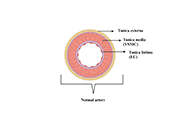 Decoding vascular aging: implications for atherosclerosis progression and clinical interventionOpen AccessReviewAge-related pathologies, particularly cardiovascular disorders, pose a significant global health concern. The World Health Organization (WHO) predicts an increase in advanced mortality by 2030 unles [...] Read more.Silumbwe Ceaser Wankumbu ... Ming XuPublished: August 02, 2024 Explor Drug Sci. 2024;2:449–472
Decoding vascular aging: implications for atherosclerosis progression and clinical interventionOpen AccessReviewAge-related pathologies, particularly cardiovascular disorders, pose a significant global health concern. The World Health Organization (WHO) predicts an increase in advanced mortality by 2030 unles [...] Read more.Silumbwe Ceaser Wankumbu ... Ming XuPublished: August 02, 2024 Explor Drug Sci. 2024;2:449–472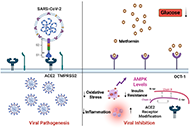 Metformin in COVID-19: a magical role beyond the hyperglycemiaOpen AccessReviewCoronavirus disease-2019 (COVID-19) has emerged as an aggressive viral infection in the last few years. Initially reported in the Wuhan area of the People’s Republic of China, it soon emerged acro [...] Read more.Gaurav Kumar Chaubey ... Manoj RajePublished: July 31, 2024 Explor Drug Sci. 2024;2:428–448
Metformin in COVID-19: a magical role beyond the hyperglycemiaOpen AccessReviewCoronavirus disease-2019 (COVID-19) has emerged as an aggressive viral infection in the last few years. Initially reported in the Wuhan area of the People’s Republic of China, it soon emerged acro [...] Read more.Gaurav Kumar Chaubey ... Manoj RajePublished: July 31, 2024 Explor Drug Sci. 2024;2:428–448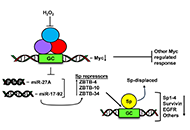 Natural products as anticancer agents and enhancing their efficacy by a mechanism-based precision approachOpen AccessReviewTraditional medicines and their active ingredients and some natural products and derived analogs have been used for treating multiple diseases including cancer. Among these compounds cytotoxic agent [...] Read more.Stephen SafePublished: July 30, 2024 Explor Drug Sci. 2024;2:408–427
Natural products as anticancer agents and enhancing their efficacy by a mechanism-based precision approachOpen AccessReviewTraditional medicines and their active ingredients and some natural products and derived analogs have been used for treating multiple diseases including cancer. Among these compounds cytotoxic agent [...] Read more.Stephen SafePublished: July 30, 2024 Explor Drug Sci. 2024;2:408–427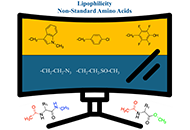 From canonical to unique: extension of a lipophilicity scale of amino acids to non-standard residuesOpen AccessOriginal ArticleAim: The lipophilicity of amino acids plays a crucial role in delineating their physicochemical properties, offering insights into solubility, binding affinity, and bioavailability, properties th [...] Read more.Antonio Viayna ... William J. ZamoraPublished: July 30, 2024 Explor Drug Sci. 2024;2:389–407
From canonical to unique: extension of a lipophilicity scale of amino acids to non-standard residuesOpen AccessOriginal ArticleAim: The lipophilicity of amino acids plays a crucial role in delineating their physicochemical properties, offering insights into solubility, binding affinity, and bioavailability, properties th [...] Read more.Antonio Viayna ... William J. ZamoraPublished: July 30, 2024 Explor Drug Sci. 2024;2:389–407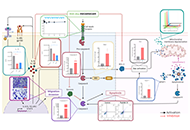 Enhanced breast cancer cell targeting: RGD integrin ligand potentiates RWQWRWQWR’s cytotoxicity and inhibits migrationOpen AccessOriginal ArticleAim: Evaluate the selective cytotoxic effect of the palindromic sequence RWQWRWQWR and its analogues obtained by replacement of L-amino acids by D-amino acids or the functionalization by adding t [...] Read more.Andrea Barragán-Cárdenas ... Javier García-CastañedaPublished: July 19, 2024 Explor Drug Sci. 2024;2:369–388
Enhanced breast cancer cell targeting: RGD integrin ligand potentiates RWQWRWQWR’s cytotoxicity and inhibits migrationOpen AccessOriginal ArticleAim: Evaluate the selective cytotoxic effect of the palindromic sequence RWQWRWQWR and its analogues obtained by replacement of L-amino acids by D-amino acids or the functionalization by adding t [...] Read more.Andrea Barragán-Cárdenas ... Javier García-CastañedaPublished: July 19, 2024 Explor Drug Sci. 2024;2:369–388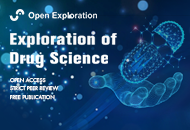 Plants and fungi metabolites as novel autophagy inducers and senescence inhibitorsOpen AccessPerspectivePremature aging can be partially explained by inefficient autophagy (the process of cellular self-digestion that recycles intracellular components) and premature senescence (cease of cellular divisi [...] Read more.Rivka OfirPublished: July 01, 2024 Explor Drug Sci. 2024;2:361–368
Plants and fungi metabolites as novel autophagy inducers and senescence inhibitorsOpen AccessPerspectivePremature aging can be partially explained by inefficient autophagy (the process of cellular self-digestion that recycles intracellular components) and premature senescence (cease of cellular divisi [...] Read more.Rivka OfirPublished: July 01, 2024 Explor Drug Sci. 2024;2:361–368